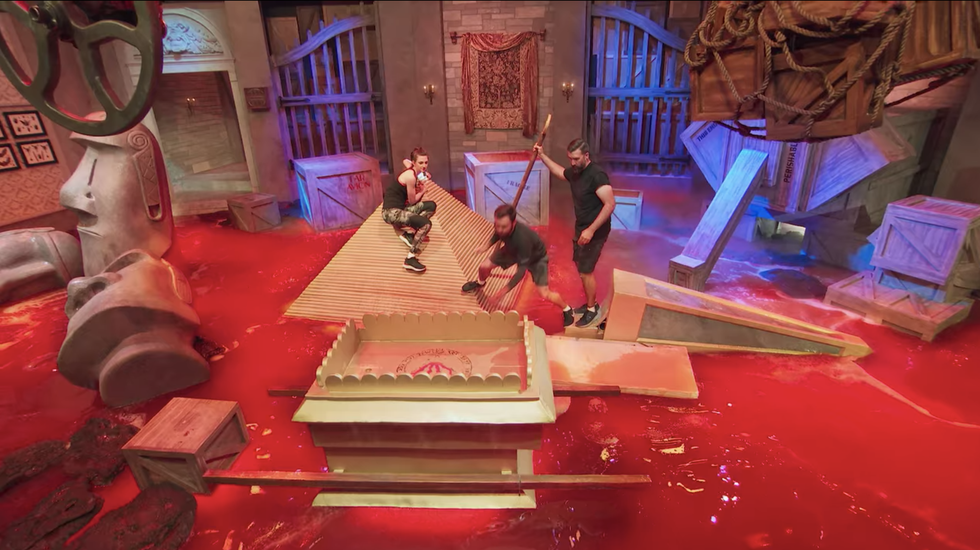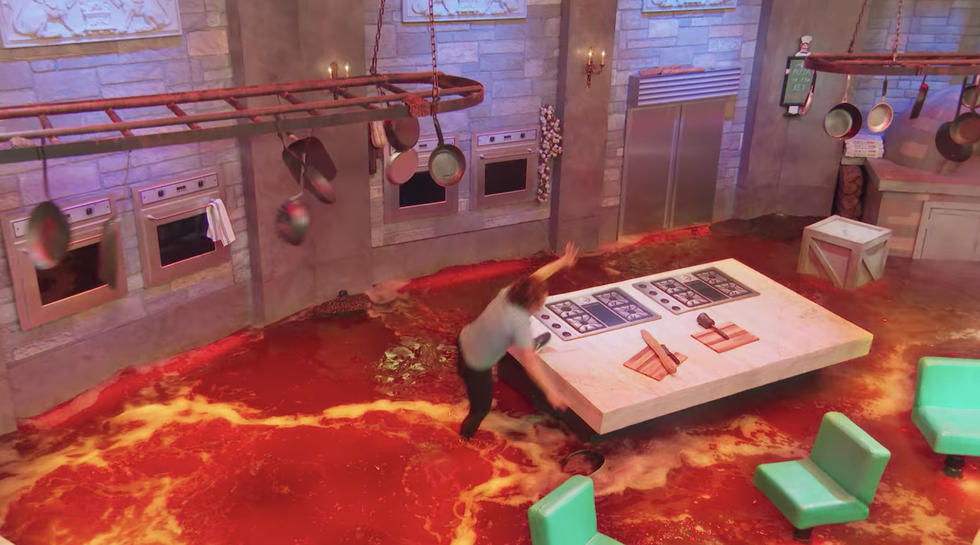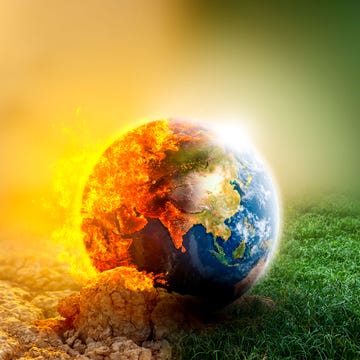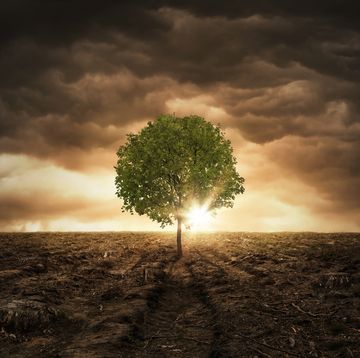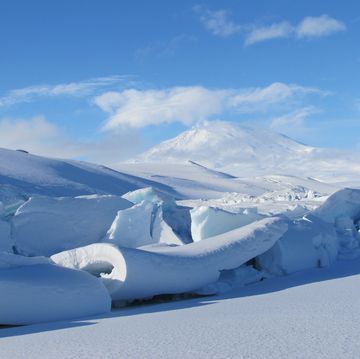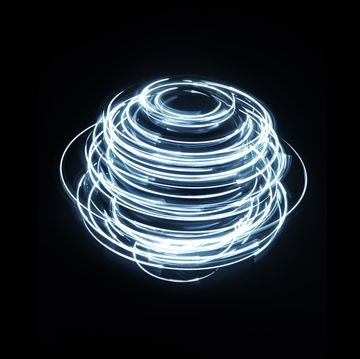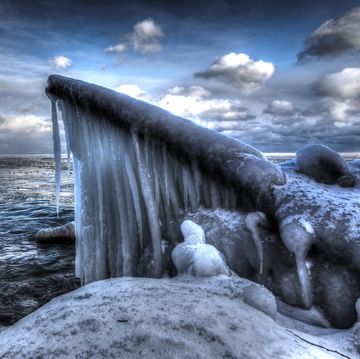You may have noticed a new series at the top of Netflix’s most-watched list this week: Floor Is Lava, an extraordinarily silly, albeit endlessly watchable reality show based on the game you probably played when you were a kid. The premise? The floor is lava. If you fall in the lava, you’re out. That’s literally it.
On the hit show, of course, contestants don’t dodge actual, fiery lava as they navigate tricky obstacles in pursuit of a $10,000 cash prize; instead, the slimy stuff is most similar to Panda Express orange sauce, according to producers.
But just for kicks, let’s say the lava in Floor Is Lava is, in fact, extremely real and extremely dangerous lava. This would raise the stakes considerably. If you were competing in this scenario, would you even stand a chance? To find out, we asked real volcanologists for their lava intel and hypothetical survival strategies.
Spoiler: You’re much better off trying to steer clear of the orange sauce.
What is lava, anyway?
Basically, it’s partially liquid rock. Earth’s core can get so hot—we’re talking as high as 6,000 degrees Celsius—that it melts rocks and minerals in the Upper Mantle, the layer about 30 to 60 miles below ground. But because different minerals melt at different temperatures, some of the rocks stay solid. The result is a super hot, thick, mostly liquid substance with tiny shards of rock and glass throughout.
Just how hot is lava?
That depends on the composition of the rock it comes from. Basaltic lava, for example, can reach up to 1,200 degrees Celsius because it contains lots of iron and magnesium, which melt at higher temperatures. Cooler lavas pack less iron and magnesium, so they aren’t hot enough to melt those elements in the surrounding rock. But the coolest (felsic) lavas are still around 800 degrees Celsius.
That sounds like it would easily melt the rooms in Floor Is Lava.
It sure would. Any type of lava would be hot enough to combust standard walls made of wood, which immediately bursts into flames at around 373 degrees Celsius. Even felsic lava could ignite obstacles made of wood, plastic, rubber, or similar materials. Each of those substances would melt if temperatures reached 300 degrees Celsius. At around 550 degrees Celsius, they’d ignite immediately.
What if I was in an all-metal room?
We see where you’re going with this, and you might be safer. Some metals—like steel, platinum, or titanium—have melting points that exceed 1,500 degrees Celsius. Walls made of those materials would stay intact. But metals are really good heat conductors, because some of the electrons inside can move freely.
That means when the metal heats up, those electrons vibrate quickly, passing energy in the form of heat throughout the entire metal—or into any unlucky fingertips that touch it. So you definitely wouldn’t be able to shimmy along the wall or fling yourself onto, say, a metal spaceship.
Is there any environment that won’t automatically kill me before we even talk about falling into the lava?
Actually, yes. The best way to keep the lava from melting or breaking the walls is to build the room out of rock—lots and lots of rock, Janine Krippner, a volcanologist with the Smithsonian’s Global Volcanism Program, tells Popular Mechanics. Basically, the room would have to be constructed just like a volcanic crater, she says. While the lava would melt some of the rock, it would cool pretty quickly when it’s exposed to the (likely air-conditioned) air and wouldn’t have enough time to melt through all of it.
So let’s assume the walls and obstacles in Floor Is Lava are made of super thick rock, or the producers have access to some kind of futuristic, heat-proof material that doesn’t actually exist. You might be able to make it through the course if not for one small problem: your body is still going to burn.
That would suck. Is there anything I can wear for protection?
Certainly not the gym shorts that the Floor Is Lava contestants wear. While scientists can sport long-sleeve tees and pants to collect lava samples in 30-second spurts, there’s no way in hell—where, we presume, there’s quite a bit of lava—that a human could survive volcanic temperatures for the 8 to 10 minutes it takes most athletes to complete the Floor Is Lava courses.
That’s especially true if you’re directly above the lava, hanging from something mounted to the ceiling. Since heat rises, the heat released by the lava would move straight up, cooking anyone trying to monkey-bar their way overhead like a rotisserie chicken. You’d get a third-degree burn in less than a second.
So what should I wear to prevent … that from happening?
A heat-resistant outfit, for starters. George Kourounis has ventured down to the bubbling surface of several lava lakes as an explorer and adventurer for the Royal Canadian Geographical Society. He wears a full-body suit with an insulated inner layer and an aluminum coating that reflects the lava’s heat away from his body.
The inner layer is like a firefighter’s suit, he says; it’s made of a fabric like Kevlar that absorbs heat. The suit is coated in aluminum, a shiny metal that’s bad at emitting heat. Aluminum looks shiny because it bounces light—and heat—away rather than absorbing it. The suit’s coating reflects most of the lava’s heat, and its inner layer absorbs more heat. But Kourounis says it’s still some of the most intense heat he’s felt.
“[The suit] keeps you from getting burned, but it most certainly doesn’t keep you cool,” he tells Popular Mechanics.
You’d probably survive wearing a suit like that, but only for a few minutes, which isn’t enough time to make it to the exit in one piece. Shuffling around in a silver spacesuit is downright exhausting, and that’s before you leap across platforms. Your body overheats and dehydrates inside the suit, Kouronis says, which makes you sluggish and clumsy. Plus, it’s hard to see with your helmet on—even more so while you’re wearing a specialized gas mask.
Wait, you didn’t tell me about a specialized gas mask.
Oh yeah, you’ll definitely need one of those, too, to avoid noxious gases or hot air scorching inside your lungs. Otherwise, the sulfur dioxide released from the bubbling lava would turn the watery fluid in your eyes’ mucus membranes into sulfurous acid. Is that worth $10k?
Probably not. But hey, if I decide to do this anyway, is there anything else I have to worry about?
Well, you should definitely hope the lava forms a crust. If the lava were a roiling liquid, it would give off so much heat that you’d probably burst into flames as soon as you entered the room, says Kourounis.
I don’t want that.
No, you don’t. Lava at the surface cools at a few hundred degrees per second when it comes into contact with ambient air. If you set the thermostat in the room to any temperature at which humans could survive, the lava would quickly form a dark, silvery crust atop the hotter lava oozing below. Sometimes that crust is up to a foot thick—enough to stand on, but it’s a dangerous gamble. The crust could break at any moment, plunging your foot into molten rock.
What if I tried to pull myself free?
Good luck. Even if you did, molten lava is pliable and sticky, like taffy. It would cling to your skin and burn your flesh down to the bone.
Fun. On Floor Is Lava, the contestants sink quickly beneath the surface when they fall into the fake lava. Would that happen to me with real lava?
Not quite. You’d actually stay near the surface, Jess Phoenix, a volcanologist and owner of the environmental nonprofit Blueprint Earth, tells Popular Mechanics. The density of lava is 3,100 kilograms per cubic meter (kg/m3), which is about three times more dense than water. And since humans are made up of around 60 percent water, that means the lava is around three times as dense as you are. So in theory, you’d float like oil on water.
Has anyone ever fallen into a lava lake?
Thankfully, no—at least not as far as we know. But scientists have conducted experiments to simulate what would happen. When a water canister or organic matter is thrown into lava, it explodes and incinerates on impact, like Mentos in Coke. If you fall in, well … you’re the Mentos.
And what would happen if I got splattered by real lava? You know, just in case?
One of two things. The lava droplets would either cool and harden as they sailed through the air, and you’d be hit by hot rocks. Or the lava would stay molten, in which case it would stick to you and burn through your clothes and skin until it cooled and hardened enough to fall off.
Each outcome depends on how big and how hot the glob of lava is. In general, smaller droplets would cool faster and turn into solid rock, whereas larger globs would stay semi-liquid for longer. Best case scenario: You get pelted with a tiny piece of rock hot enough to burn your regular clothes or your skin. Worst case? The volcano spits a car-sized chunk of molten lava at you.
So you’re saying this is all a pretty bad idea.
Yes.

Sofie Bates is a science writer and videographer based in California who loves learning and telling people about what she's learned; she has shared cool science stories for Science, Science News, NASA, The Mercury News, and Forbes, among others.

